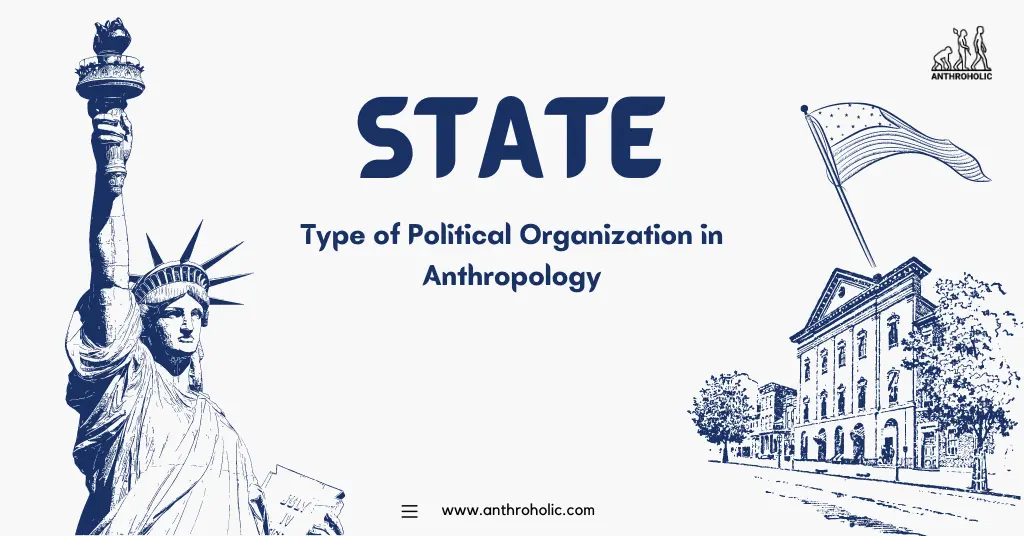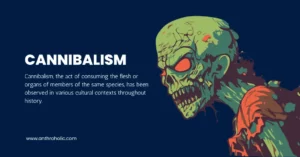AI Answer Evaluation Platform Live Now. Try Free Answer Evaluation Now
State
The state, a central concept in political science and sociology, has diverse interpretations. From a political anthropological perspective, the state is more than an abstract concept, it’s a social and cultural phenomenon [1]. This article delves into the multifaceted concept of the state, its formation, components, and the theoretical models that explain state behaviour.

The Concept of the State
In its simplest form, the state is an institution with a monopoly on the legitimate use of physical force within a given territory [2]. Yet, its definition in political anthropology expands to include elements like culture, societal structure, and power relationships.
Characteristics of a State
States, regardless of their size or political structure, share some common characteristics:
- Sovereignty: The state has supreme authority within its borders.
- Territory: A state possesses a defined geographical area.
- Population: A state contains a population that resides within its borders.
- Government: A state has an organized political structure that creates and enforces laws [3].
The Formation of the State
Theories of State Formation
There are several theories of state formation from an anthropological perspective, some of which include:
- The Hydraulic Theory: This theory posits that states form to manage and control water resources, especially in arid areas where these resources are scarce [4].
- The Circumscription Theory: It suggests that states formed due to population pressure on available resources, especially in areas where geographical features limited population movement [5].
- The Coercion Theory: Here, the state is formed to exert power over a population for economic gains or defense purposes [6].
Each of these theories offers a unique lens through which to view the origins of the state, but they all underscore the inherent relationship between resource management, population control, and the formation of states.
Components of the State
To understand the state from a political anthropological perspective, it is critical to examine its components.
1. The Bureaucracy
This is a system of administration or management that executes the laws and policies of the state. The bureaucracy has certain characteristics [7]:
- Hierarchy: There is a clear chain of command and authority.
- Specialization: Roles and tasks are divided among members based on expertise.
- Formal Rules: Procedures are governed by formal rules and regulations.
2. The Legal System
The legal system ensures order and resolves disputes within the state. It encompasses both civil and criminal law [8].
3. The Military
The military protects the state against external threats. It also maintains internal order when necessary [9].
Theoretical Models of State Behaviour
Two major theoretical models describe state behaviour:
- The Realist Model: States are sovereign entities that act in their own self-interest, especially in the context of international relations [10].
- The Idealist Model: States act based on moral principles and are guided by international law and institutions. Cooperation and peace are prioritized.
These models are not mutually exclusive; states may shift between them based on internal or external factors.
The State and Power Relations
From an anthropological perspective, power relations within the state can be understood through the concepts of “hard power” and “soft power” [11].
Hard Power
Hard power pertains to the coercive abilities of a state, such as military might and economic sanctions, which are used to induce or force others to change their position.
Soft Power
Soft power, a term coined by Joseph Nye, involves the use of cultural influence, political values, and foreign policies to persuade or attract others to adopt similar views or actions [12].
State and Culture
Culture plays a significant role in shaping the state and its actions. The state actively participates in shaping the national culture, establishing norms, and fostering societal values [13]. This can be seen in national symbols, state rituals, and public policies that promote specific cultural norms.
Evolution of the State
The concept of the state is not static; it evolves over time, reflecting the changes in society.
From Nation-States to Global Governance
With increasing globalization, the classic Westphalian model of the nation-state is evolving. Supranational entities like the European Union and international institutions such as the United Nations have gained more influence, leading to a shift towards global governance [14].
Emergence of the Digital State
The advent of technology has led to the emergence of the digital state. This involves the use of digital technology to enhance public services, improve governance, and facilitate citizen participation in government processes [15].
Challenges to the State
The state faces several challenges in the 21st century:
- Globalization: The rise of global governance and the erosion of state sovereignty.
- Terrorism: Non-state actors threatening the state’s monopoly on violence.
- Climate Change: Environmental changes requiring international cooperation, often limiting state autonomy.
- Technological Advancements: The growth of cyberspace, artificial intelligence, and other technological advancements pose new challenges to governance and security.
Conclusion
Understanding the state from a political anthropological perspective demands an exploration beyond formal definitions and structures. It involves analyzing the social, cultural, and power dynamics that shape state behavior, formation, and function. As society evolves, so does the concept of the state, necessitating continued research and exploration within this field.
References
[1] Abrams, P. (1988). Notes on the Difficulty of Studying the State. Journal of Historical Sociology, 1(1), 58–89. https://doi.org/10.1111/j.1467-6443.1988.tb00004.x
[2] Weber, M. (1919). Politics as a Vocation.
[3] Shaw, M. (2003). International Law. Cambridge University Press.
[4] Wittfogel, K.A. (1957). Oriental Despotism: A Comparative Study of Total Power. Yale University Press.
[5] Carneiro, R.L. (1970). A Theory of the Origin of the State: Traditional Theories of State Origins Are Considered and Rejected in Favor of a New Ecological Hypothesis. Science, 169(3947), 733-738.
[6] Mann, M. (1986). The Sources of Social Power: Volume 1, A History of Power from the Beginning to A.D. 1760. Cambridge University Press.
[7] Weber, M. (1922). Economy and Society. Bedminster.
[8] Elias, N. (2000). The Civilizing Process: Sociogenetic and Psychogenetic Investigations. Wiley.
[9] Janowitz, M. (1960). The Professional Soldier: A Social and Political Portrait. The Free Press.
[10] Buzan, B. (1991). People, States, and Fear: The National Security Problem in International Relations. Harvester Wheatsheaf.
[11] Nye, J. S. (2004). Soft Power: The Means to Success in World Politics. PublicAffairs.
[12] Nye, J. S. (1990). Bound to Lead: The Changing Nature of American Power. Basic Books.
[13] Swenson, A. (2009). States and Citizens: History, Theory, Prospects. Cambridge University Press.
[14] Held, D., & McGrew, A. (2002). Governing Globalization: Power, Authority and Global Governance. Polity Press.
[15] Dunleavy, P., Margetts, H., Bastow, S., & Tinkler, J. (2006). Digital Era Governance: IT Corporations, the State, and e-Government. Oxford University Press.




